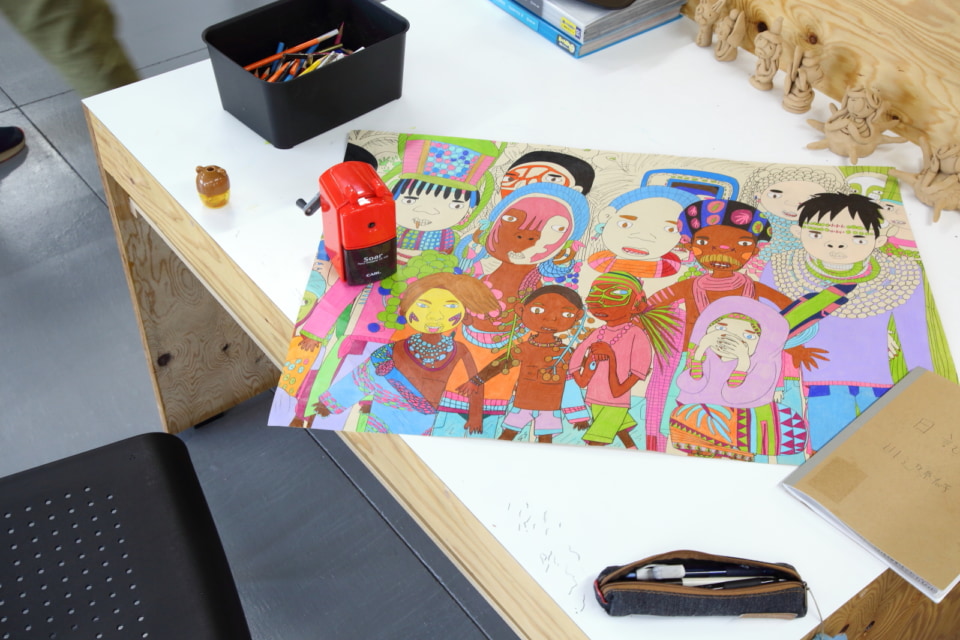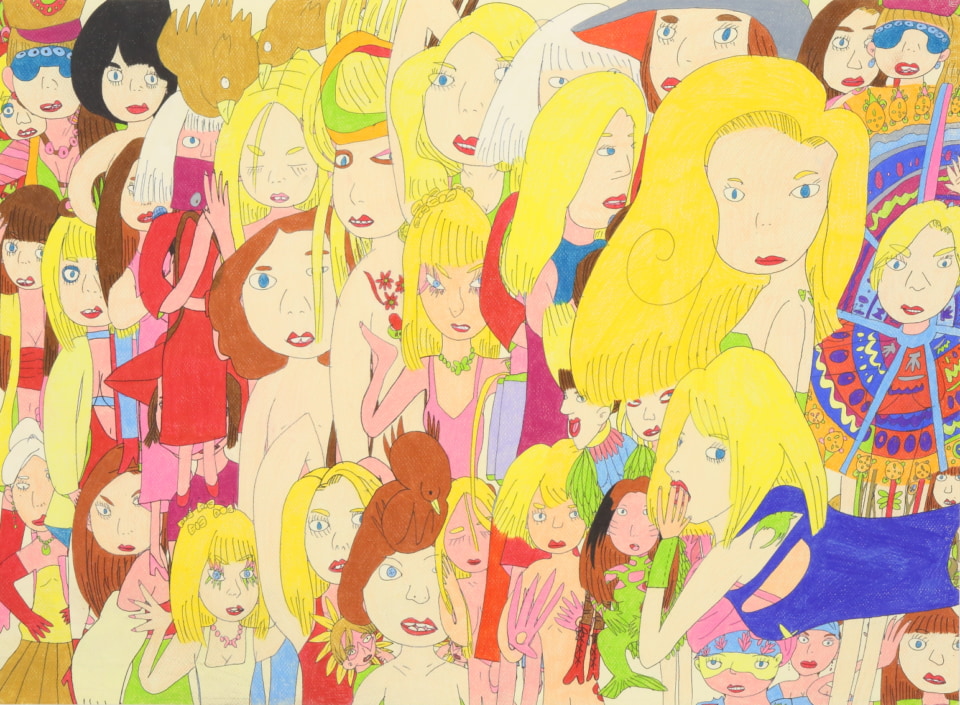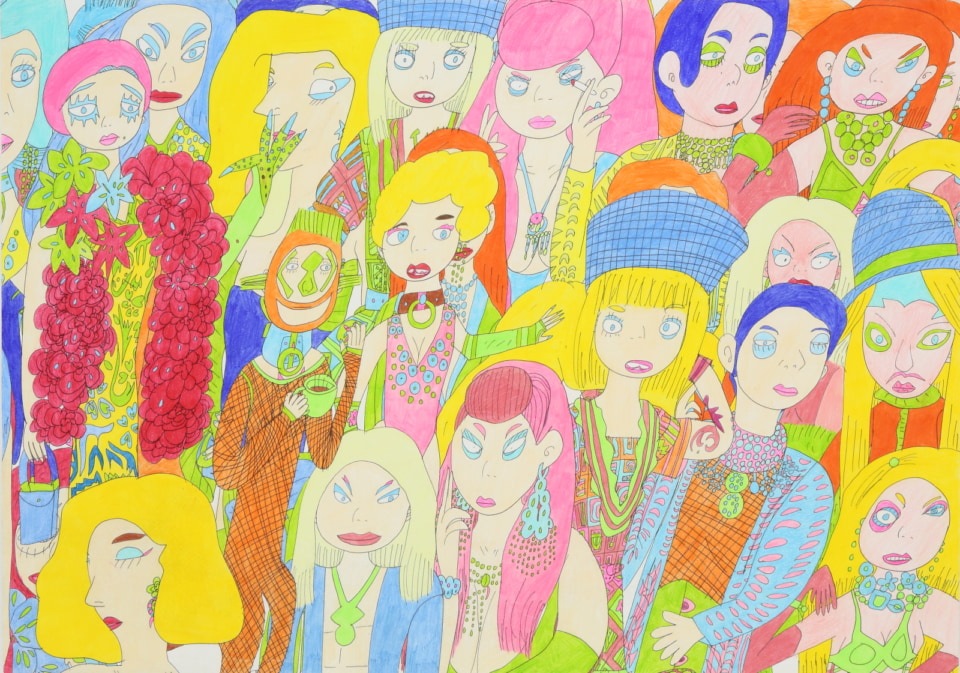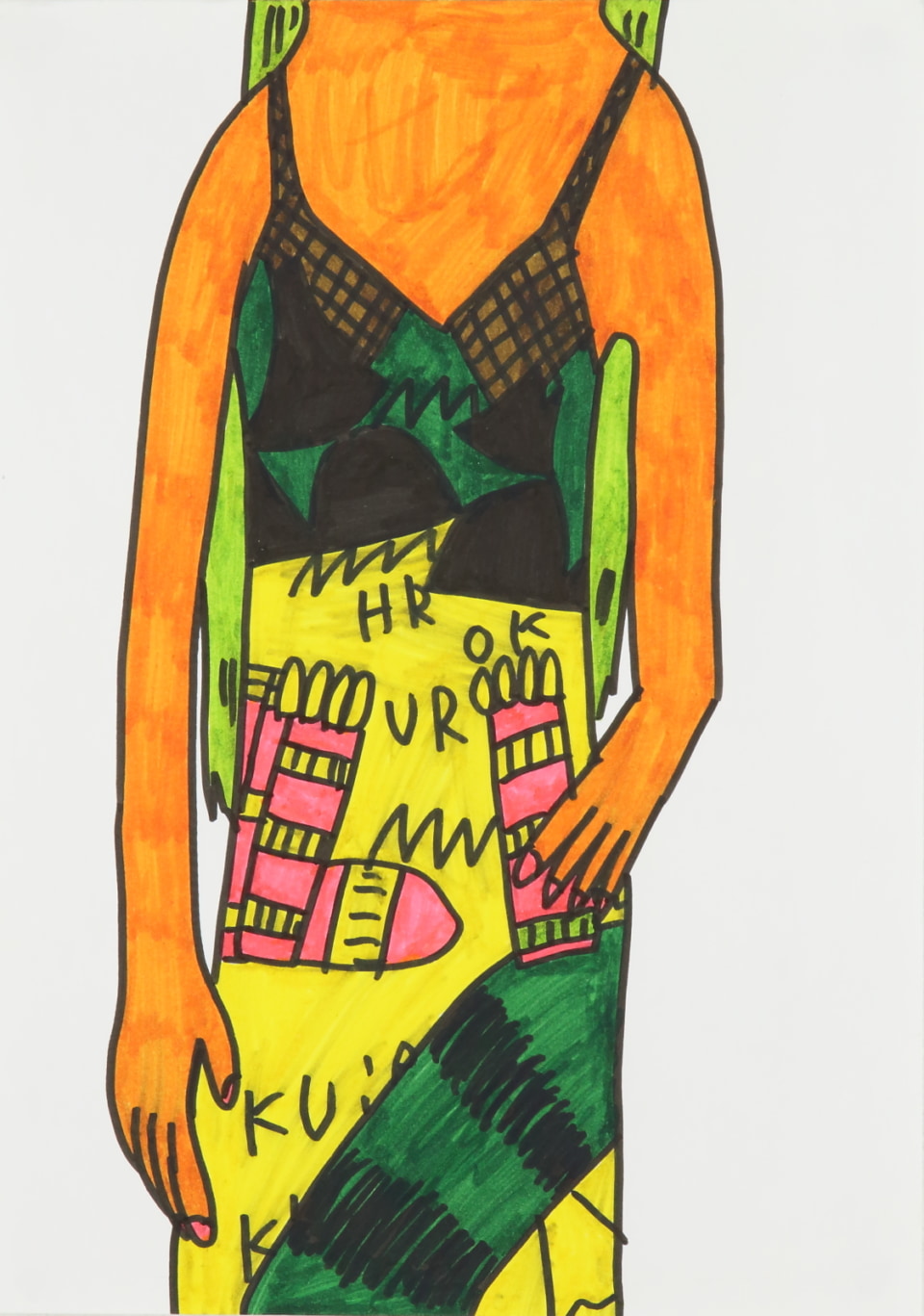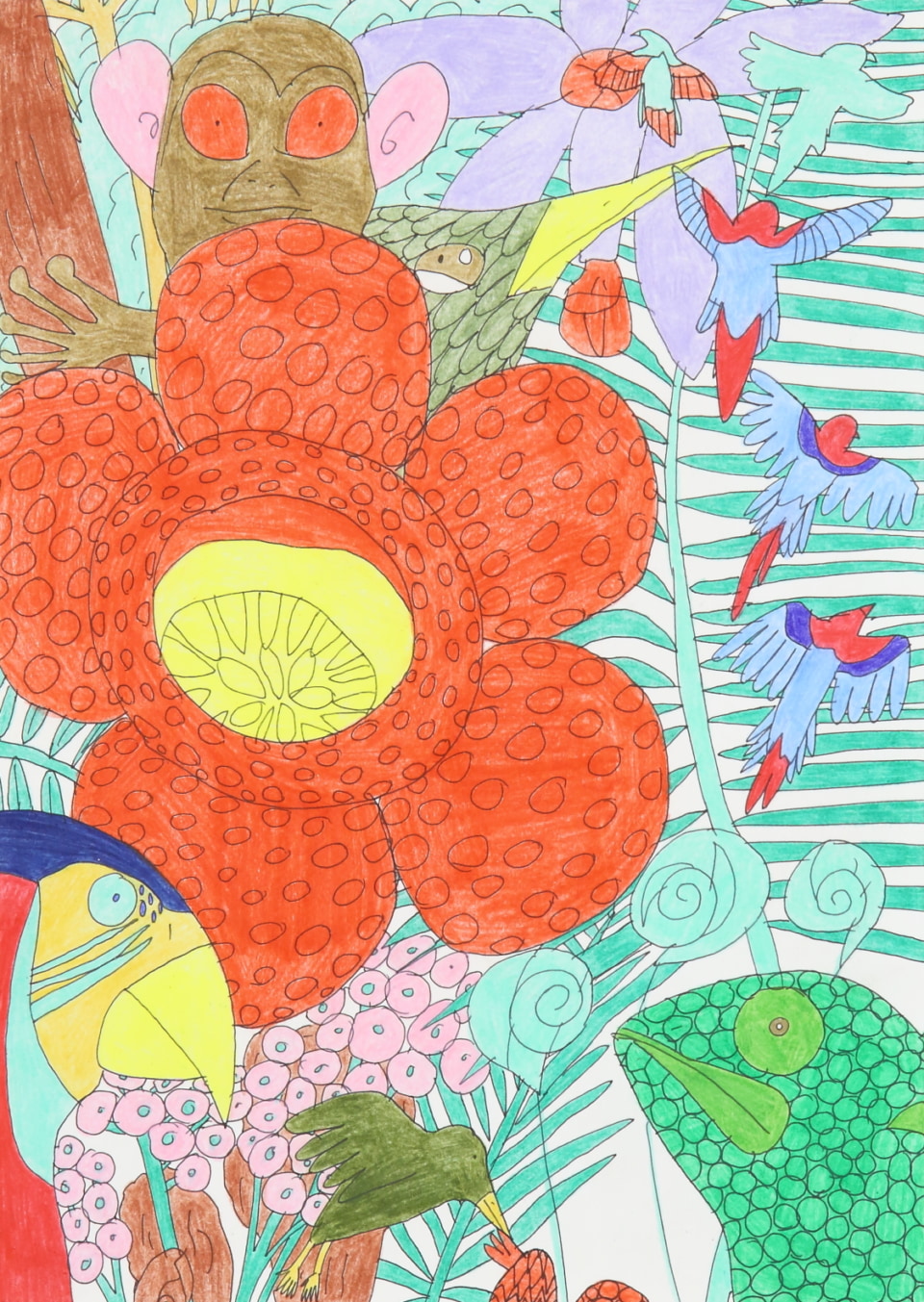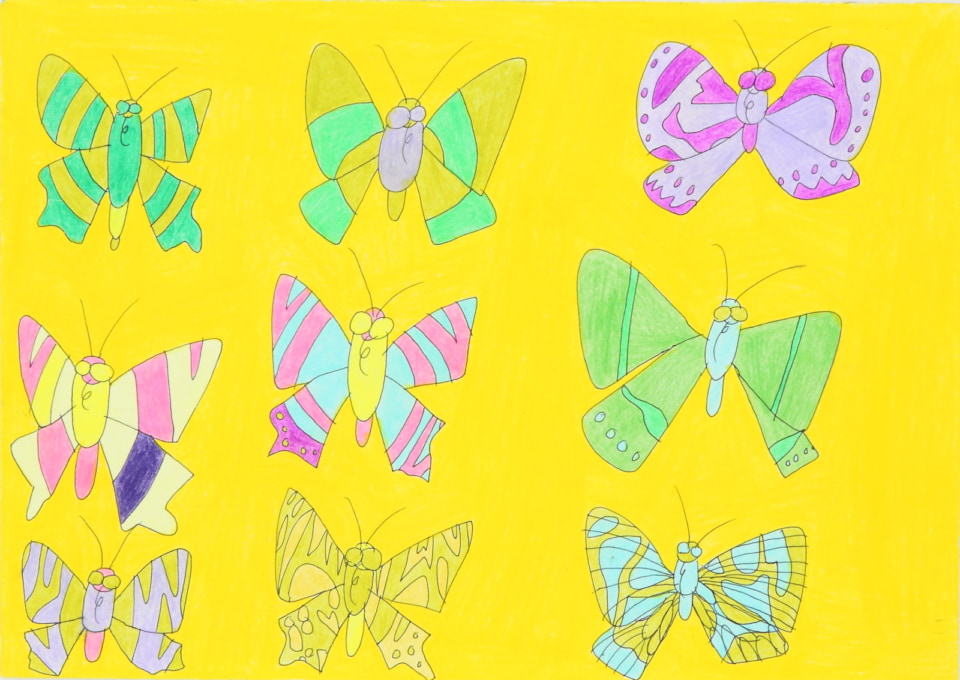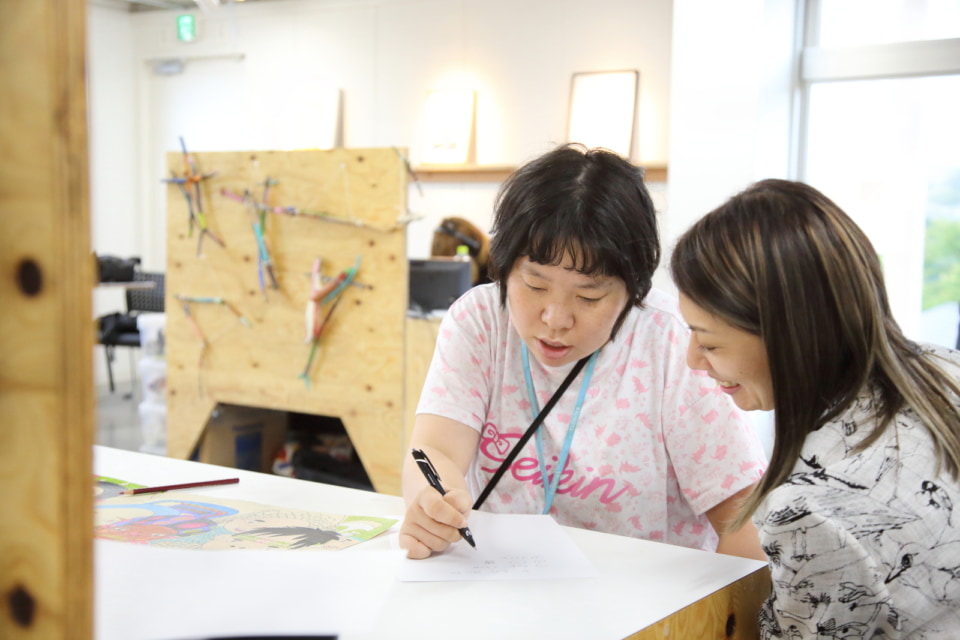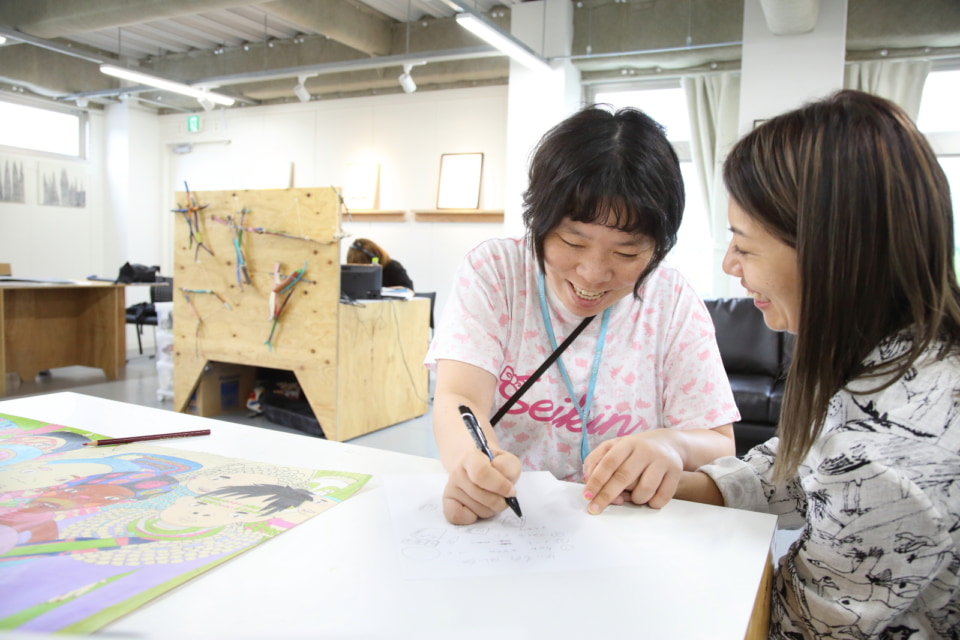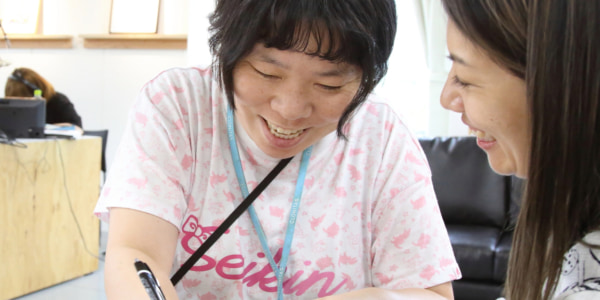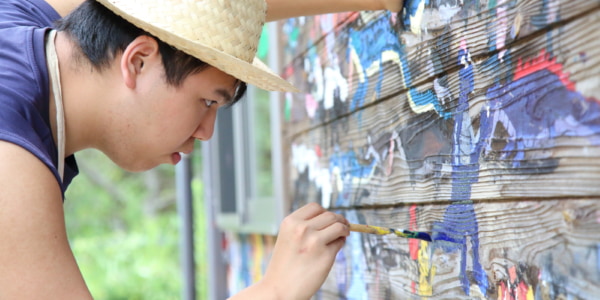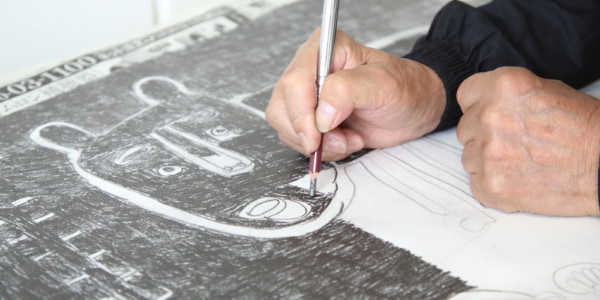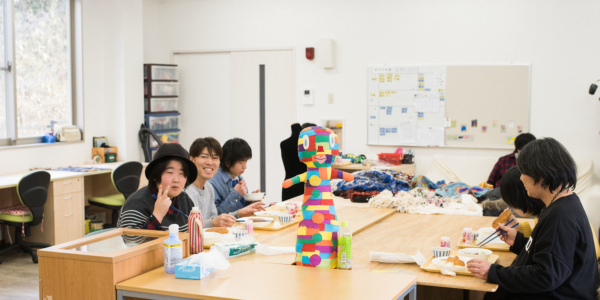What lies behind the bright colors
I arrive in Shiga Prefecture’s 〈Atelier Yamanami〉. There in the quiet studio, a woman sits facing a desk. Her colored pencil moves slowly over the paper. I’m just thinking to myself that she seems concentrated on her drawing when she stares off into the distance. Then she returns once again to the world of her drawing. Her gaze moves alternately between the paper before her and the reality around her.
Kawabe is known as an artist for her drawing style comprising colorful tones and soft lines. She appears to have an interest in fashion, and her drawings are populated by slender, stylish women who look like models. Blonde, glitzy girls crowd the paper. The brightly drawn people in her works break into energetic dance.
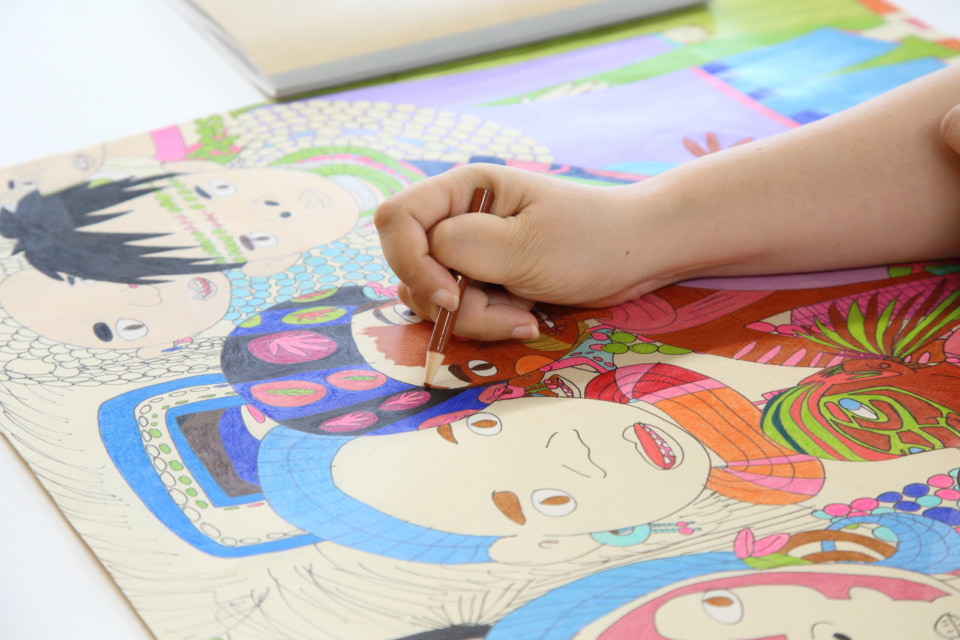
Kawabe has recently been drawing African tribespeople, influenced by the vision of the world captured by photographer YOSHIDA Nagi, whose works feature ethnic minorities and indigenous peoples. With their beautiful, colorful clothes and accessories, the tribespeople of Africa must have struck Kawabe as the ideal models for her work.
Because each of Kawabe’s drawings fills the entire surface of her paper, some part of the piece is almost always cut off where it meets the edge. Where have those un-drawn sections gone, I wonder. I find myself imagining these un-drawn things. When we view her art, we are, in essence, imagining the vast world that she has drawn.
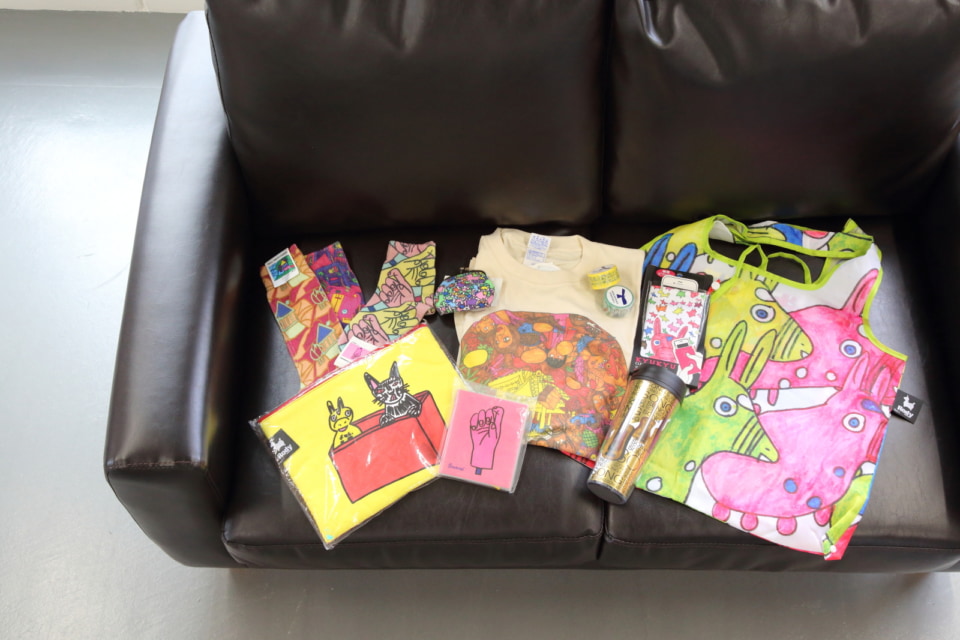
A variety of merchandise featuring Kawabe’s works.
Drawings created as a means to live
Kawabe is hard of hearing and uses hearing aids. For her, the act of drawing has been a necessity of life. Due to her hearing loss, she had difficulty speaking and reportedly began drawing in order to communicate how she was feeling to her parents.
She used her drawings to communicate urgent messages like “my stomach hurts” and “I don’t feel well.” For her, drawing is a communication tool equivalent to speaking, seeing, or listening. Our first glance shows us the brightness and sophistication of her drawings, but these are built on the skills she acquired as a lifeline. This could explain the vitality alive within her drawings.
Staff member IZURIHA Tomoko is the same age as Kawabe, and the two seem to get along well. Kawabe breaks into a smile as Izuriha approaches. They talk together using simple words, gestures, and writing.
“I’m going to the store—do you need anything?” Izuriha asks.
“I do,” Kawabe says with a nod, before writing a note with a pencil and handing it to Izuriha.
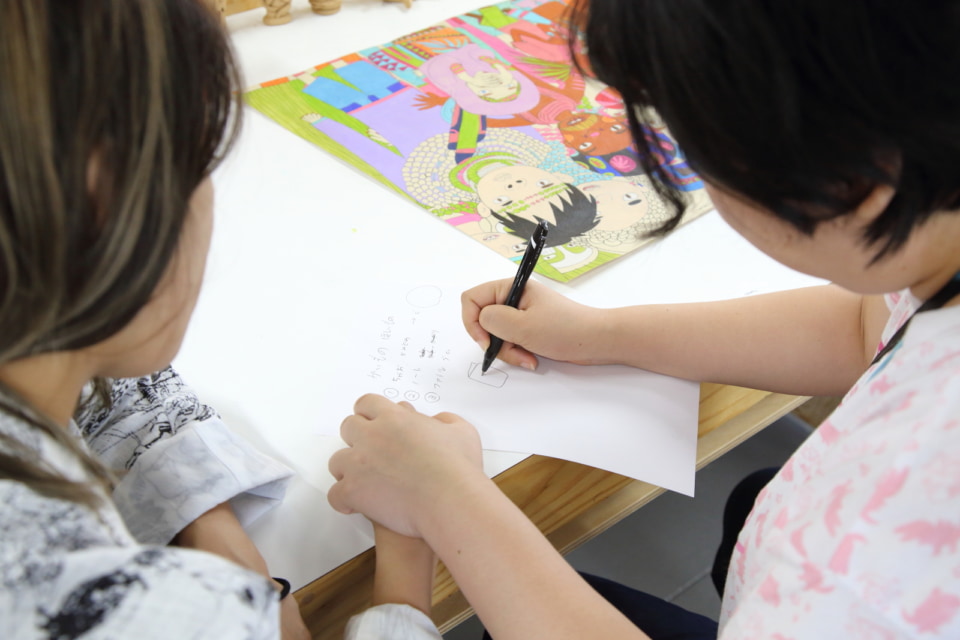
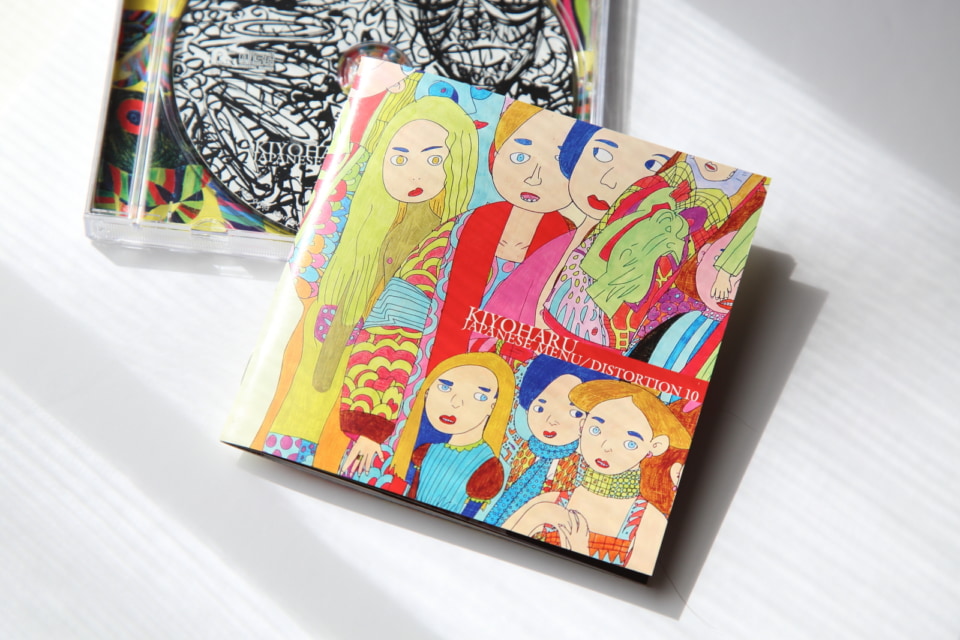
“JAPANESE MENU/DISTORTION 10” (PONY CANYON INC.)
I found myself wondering why Kiyoharu felt that Kawabe’s drawings, with their pop-art style, fit in with his own cool vibe.
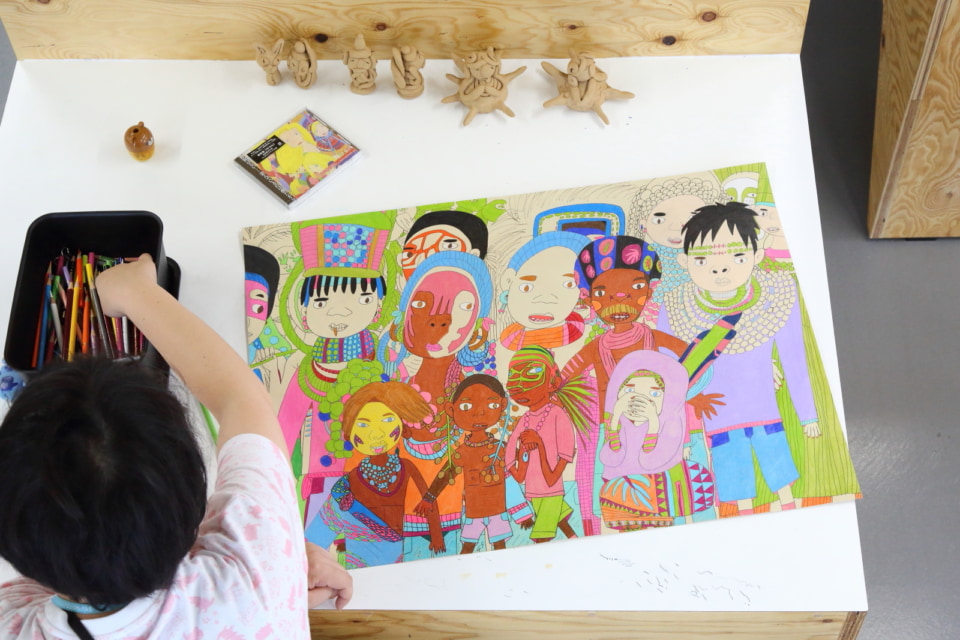
Kiyoharu’s CD is sitting on Kawabe’s desk when I visit.
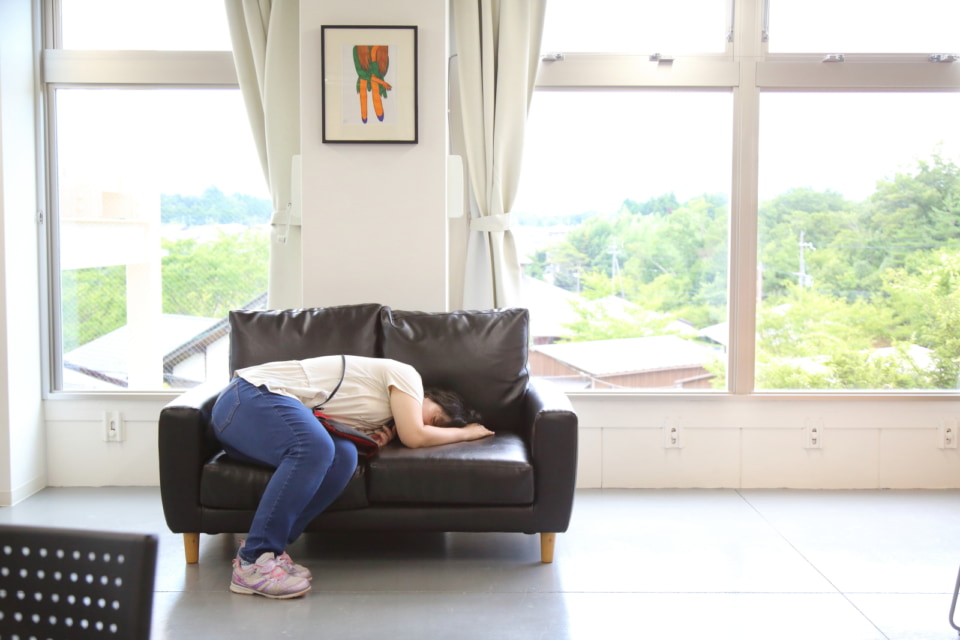
Many people have fallen in love with Kawabe’s talent. Yet Kawabe herself shows no sign of putting on airs and goes very much at her own pace. Today, as usual, she gazes into the distance and runs her pens over her paper. And then, when she loses focus, she flings herself onto a nearby sofa and lies down.
At 〈Atelier Yamanami〉, this won’t get her into any trouble. “She basically sticks to her own pace,” Izuriha laughs. Kawabe has no shortage of supporters at 〈Atelier Yamanami〉. I figure this is why she draws, happy here.
Kawabe quietly falls into a doze. In contrast, the inhabitants of her unfinished drawing are wildly loquacious. They wait merrily for Kawabe to take up her pencils again.
